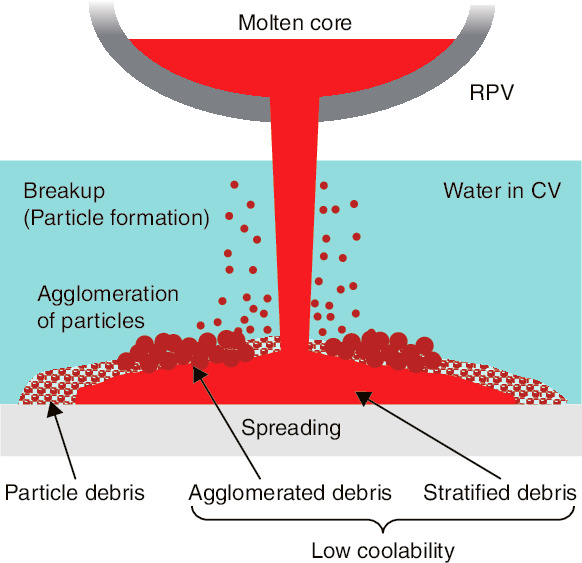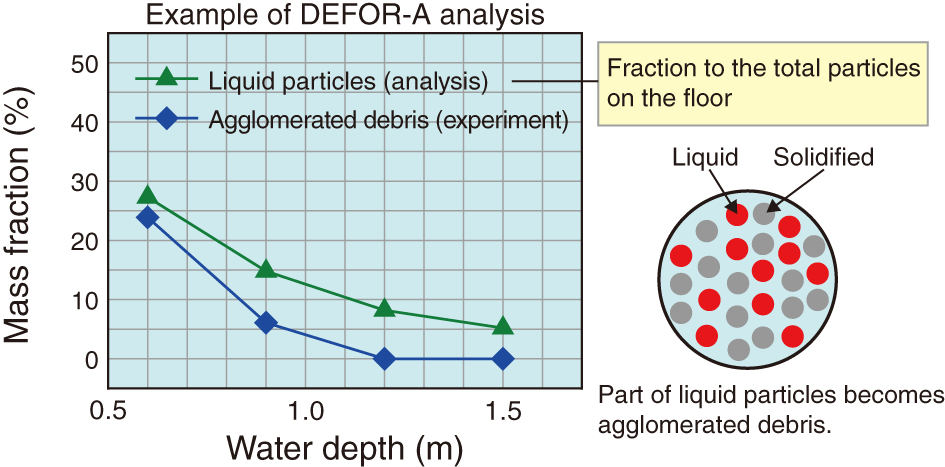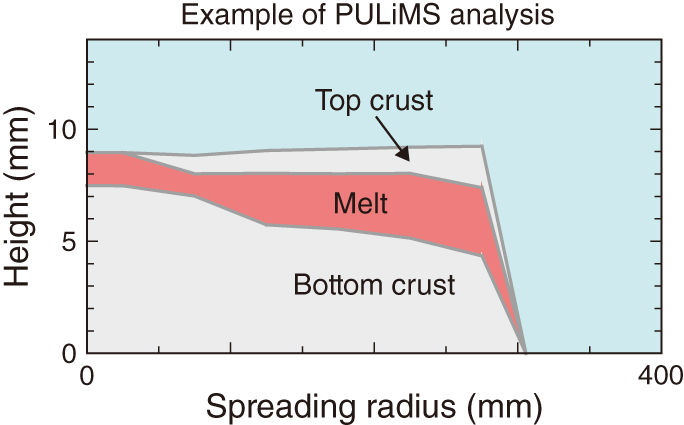
Fig.2-5 Behavior of a molten core slumping into water during a severe accident

Fig.2-6 Evaluation of the agglomerated-debris fraction

Fig.2-7 Analysis of melt spreading on the floor
In severe accidents, the integrity of the reactor containment vessel (CV) can be degraded by molten–core–concrete interaction (MCCI) following the failure of the reactor pressure vessel (RPV) and slumping of the molten core into water. To prevent and mitigate MCCIs, Japanese utilities employ the strategy of injecting water into the CV prior to RPV failure. The molten core transforms into three types of debris with different forms and coolabilities (Fig.2-5), and its spread on the floor increases its contact area with water. Therefore, the fraction of each form of debris and the area of its spread are important for debris-coolability evaluation. As these quantities are affected by parameters such as molten-core temperature, water depth, and temperature, we have been developing analytical techniques to consider these parameters and will eventually stochastically evaluate the debris coolability and effectiveness of MCCI-prevention measures considering the probability distribution of the parameters.
In this study, we enhance the capabilities of the fuel-coolant-interaction-analysis code JASMINE to calculate the debris fractions and spreading areas.
First, the diameter-distribution model of melt particles was implemented to reproduce experimental data. Some large particles with low coolability land on the floor before solidification and can form agglomerated debris by bonding with each other. The relation between the agglomerated-debris fraction and water depth was obtained from DEFOR-A melt-slumping tests conducted by the Swedish Royal Institute of Technology (KTH). The test results demonstrate that greater water depths correspond to smaller agglomeration fractions. Analyses of tests with modified JASMINE showed that focusing upon the liquid-particle fraction was an effective means of evaluating the agglomerated-debris fraction (Fig.2-6).
Second, the hydrodynamic models of spreading and solid-surface (crust) formation were implemented to study the melt behavior on the floor. Analyses of the KTH’s PULiMS melt-spreading tests reproduced the stopping of such spreading and the formation of a three-layer structure in the solidified melt (Fig.2-7).
Techniques for evaluating the effectiveness of MCCI-prevention measures in power reactors were developed in this study although there are still issues to be solved; one example is the reproducibility of melt spreading area. In the next step, we intend to improve the melt-water heat-transfer and agglomerated-debris-formation models, among others.
This study was conducted under contract with the Secretariat of the Nuclear Regulation Authority (NRA), Japan.